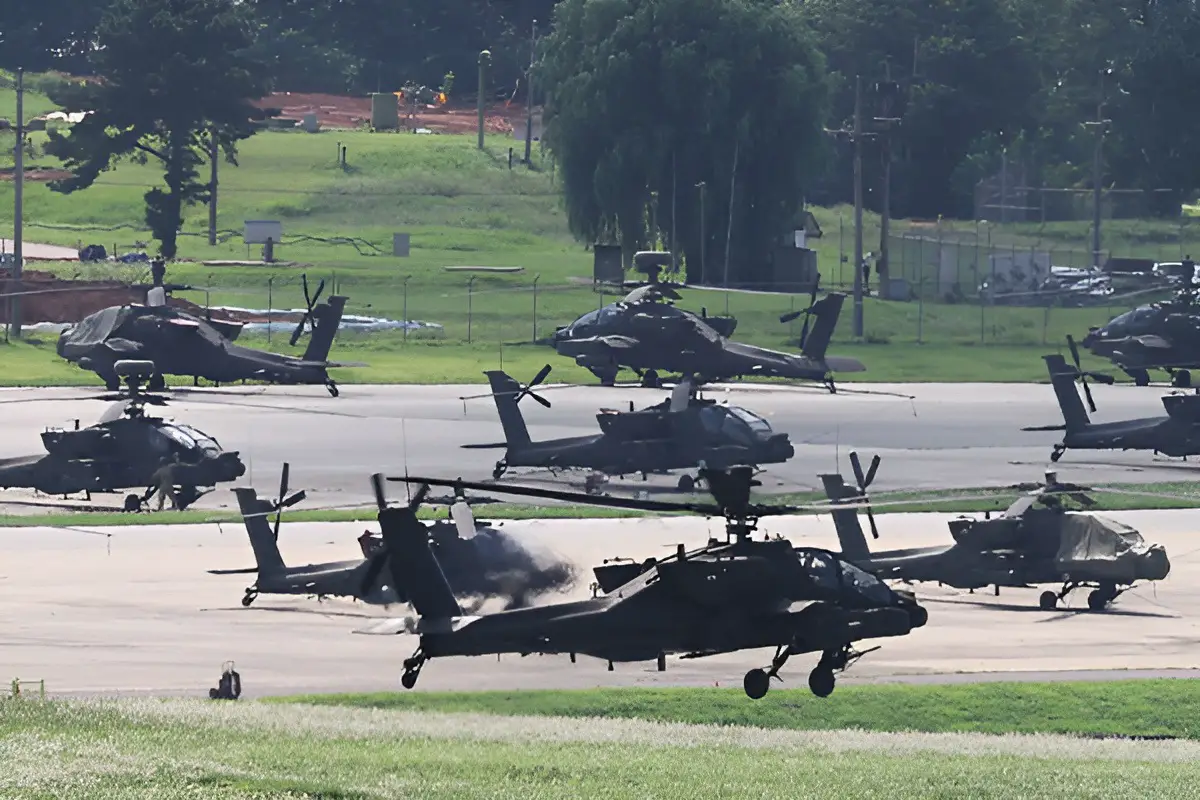South Korea and the United States are set to commence their annual Ulchi Freedom Shield military exercises next week, focusing on bolstering their combined defensive capabilities in the face of growing North Korean nuclear threats. The exercises, scheduled from Monday through August 29, are designed to enhance readiness against a wide array of potential threats, including missile attacks, GPS jamming, and cyberattacks, according to officials from both nations. The Ulchi Freedom Shield exercises are expected to draw a hostile response from North Korea, which has consistently labeled the joint drills as rehearsals for an invasion. The reclusive state has used these exercises as a justification to accelerate its nuclear weapons and missile development programs, further straining already tense relations on the Korean Peninsula.
The military drills will encompass both computer-simulated exercises and field maneuvers, including live-fire exercises. These scenarios are aimed at preparing the allies to respond effectively to various threats, particularly from North Korea, whose actions remain unpredictable. The allies are committed to “strengthening their combined capabilities and defense posture against weapons of mass destruction,” military officials stated at a joint press briefing. The focus on deterrence underscores the serious nature of the threats posed by North Korea’s growing arsenal of nuclear and missile technologies. Approximately 19,000 South Korean troops would participate in the exercises. The drills are an “essential element for maintaining a strong defense posture to protect the Republic of Korea (South Korea by its official name).
The spokesperson for U.S. Forces Korea, declined to provide specific figures on the number of U.S. troops involved but highlighted that the drills would focus on interoperability between the two allies. U.S. strategic assets, including long-range bombers, submarines, and aircraft carrier strike groups, have been deployed in the region to engage in joint training with South Korean and Japanese forces. These assets aim to project strength and serve as a deterrent against North Korea. This year’s exercise would integrate realistic threats, including missile threats from North Korea, and lessons learned from recent global armed conflicts. The emphasis will be on combined field training exercises that span all domains of warfare, including air, sea, land, and cyber. These exercises, along with live-fire drills, will demonstrate the alliance’s collective military capabilities and resolve to counter any aggression from North Korea.
Adding another layer of defense readiness, the South Korean military will also conduct civil defense and evacuation drills next week, specifically focused on North Korean nuclear attack scenarios. These drills will run concurrently with the military exercises and aim to prepare the civilian population for any potential nuclear threats from the North. The geopolitical situation on the Korean Peninsula remains volatile, as North Korean leader Kim Jong-un continues to use the war in Ukraine as an opportunity to expedite his weapons development programs. North Korea has also stepped up its verbal threats, openly discussing the possibility of nuclear conflict with Washington and Seoul. In response to these developments, South Korea, the U.S., and Japan have intensified their combined military drills and enhanced their nuclear deterrence strategies, increasingly relying on U.S. strategic assets as a cornerstone of their defense strategy. Last year’s Ulchi Freedom Shield exercises were met with North Korean ballistic missile tests that simulated “scorched earth” nuclear strikes on South Korean targets, further escalating tensions between the two Koreas.















